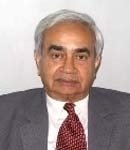The 9/11 Report: Lessons for India
16 Aug, 2004 · 1464
PR Chari examines lessons for India from the failures of US intelligence agencies as discussed in the 9/11 Report
The voluminous report of the National Commission on Terrorist Attacks Upon the United States, popularly called the 9/11 Report, was released on 22 July. It discusses why the U.S. intelligence agencies were unable to anticipate the terrorist attacks on the American mainland on 11 September 2001,and notes that, “The 9/11 attacks were a shock, but should not have come as a surprise,” since all concerned “had received clear warning that Islamist terrorists meant to kill Americans in high numbers.”
Various Islamist extremist groups had carried out the 9/11 attacks, master-minded by Osama bin Laden. The Report asserts that, “The enemy is not Islam, the great world faith, but a perversion of Islam;” hence the long term objective of American policy must be “prevailing over the ideology that contributes to Islamist terrorism.” The al Qaeda is branded to be an ideological movement that inspires terrorism; destroying it will improve the safety of the American people. “But we are not safe,” since the ideology will persist. A new range of American initiatives to counter international terrorism is on the cards that will sharpen the confrontation between the U.S. and its allies with the Muslim world.
The diplomatic thrust to American foreign policy suggested by the Report supports this conclusion. It enumerates that, “Before 9/11, the United States could not find a mix of incentives and pressure that would persuade Pakistan to reconsider its fundamental relations with the Taliban”; that U.S. efforts to press the United Arab Emirates to break off its ties with the Taliban and enforce sanctions “achieved little before 9/11”; and that “Saudi Arabia has been a problematic ally in combating Islamic extremism”. On the prescriptive side, the Report recommends the strengthening of “long-term U.S. and international commitments to the future of Pakistan and Afghanistan;” thus it persists in the fond hope that Pakistan will root out the al Qaeda and Taliban from Afghanistan, and deliver Osama bin Laden at an appropriate time nearer the Presidential elections. The Report is more realistic in holding that the U.S. must, “confront problems with Saudi Arabia in the open and build a relationship beyond oil, a relationship that both sides can defend to their citizens, and includes a shared commitment to reform.”
The Report also finds that failures occurred in imagination (comprehension about the nature of the new threat from the al Qaeda); policy (terrorism was not a priority security concern for the Clinton and pre-9/11 Bush administrations); capabilities (serious weaknesses in agency capacities, especially in the domestic arena); and management (sharing of information and duties, particularly across the foreign-domestic divide).
So, what are the lessons that India could imbibe? Four major ones can be identified.
First, great emphasis was apparently placed by American policymakers and military officials on having “actionable intelligence” before launching a military attack on Osama bin Laden and the al Qaeda, both to avoid “collateral damage” and ensure that their target(s) were not missed. Votaries of the limited war thesis in India might appreciate these stringent requirements for attacking targets in adversary territory. The targets chosen should be lucrative, but collateral damage must be avoided, and the attack definitely must succeed.
Second, the American chain of command was dysfunctional. Communications were poor. Senior military and Federal Aviation Agency officials had no contacts. The Secretary of Defence remained out of the picture, and Air National Guard aircraft were scrambled without the knowledge of the President. In the Indian situation the imperative need seems endorsed that drills should be held to ensure that procedures in the command structure are ironed out before an emergency occurs.
Third, the Report makes a useful recommendation, fully applicable to India, to, “Expect less from trying to dry up terrorist money and more from following the money for intelligence, as a tool to hunt terrorists, understand their networks, and disrupt their operations.” In other words, follow the money trail to find the terrorists.
Fourth, the Report commends the need “to bring the major national security institutions into the information revolution, turning a mainframe system into a decentralized network…[however] to build the network requires an effort that transcends old divides, solving common legal and policy issues in ways that can help officials know what they can and cannot do.” This emphasizes on the need to share information, highlighting the necessity for coordination between intelligence agencies, eschewing one-upmanship, and the turf wars that afflict Indian intelligence agencies and security decision-making processes.
But the greatest lesson for India to imbibe is the willingness by the United States to accept intelligence failures, study its shortcomings and make improvement. The general attitude in the Indian intelligence and security establishments, when problems arise, is to either deny everything or shift responsibility or whitewash these failures.


